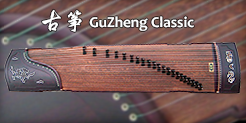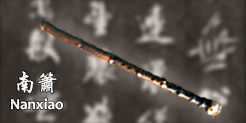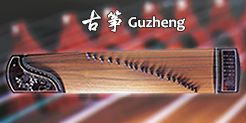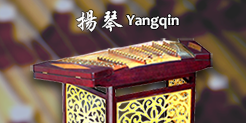Chinese Orchestra Individuals
- SYSTEM REQUIREMENT: Windows 64-bit, macOS 10.13+
- Standalone application, VST3, AAX plugin and Audio Unit plugin (macOS only)
- Activation is inside setting page of QinEngineV3 with your purchasing account info.
Instruments
New Product
GuZheng Classic
The free GuZheng Classic here contains only a fraction of the sound of their big brothers, and also lacks a little live playability. However it is still among the best Chinese sound. We hope you will enjoy them.
PaiXiao
PaiXiao is one of the earliest traditional Musical Instruments in China with more than 3000 years history. It was usually played with songs, dancing, ceremonies. It is now very popular in Buddhist music.
GuZheng ChaoZhou
GuZheng ChaoZhou is originated from GuZheng of central China. It’s now most popular in Guangdong, Fujian provinces, and Southeast Asia. It adds unique feature to many south China music and opera.
Dramyin
Dramyin is a traditional Tibetan instrument popular in Tibet, Sichuan, Yunnan, Qinghai and Gansu area. It features the same note on two strings.
Category Winds
Dizi of Winds
Dizi (bamboo flute) has always been a traditional and popular instrument in China for many centuries. The samples contains 8 different flutes: two common QuDi, two BangDi, two Bass Dizi, one ChaoZhou Dizi.

Included in Winds Individual
Check above
DongXiao of Winds
DongXiao is a Chinese end-blown bamboo flute noted for its mellow and melancholy tone.
NanXiao, the Melancholic Sound from China
The sound character of Xiao is of something more saddened, battered, and is filled with a melancholic mood.
SuoNa, A hybrid crossover of brass and woodwind
The sound of Suona is energetic, unapologetically harsh, abrasively brash, and proud-to-be-so-loud, blasting out everything in sight.
GuanZi, The Sound of Inconsolable Sadness
GuanZi was once one of the standard instruments of court music. It was also used in military and festival events, as well as monumental, burial ceremonies.
Sheng, The Mouth Organ of Concord
Sheng is extremely versatile and expressive in its own right, with a wide note range, as well as much the broad tonal textures.
HuLuSi, Riveting Sound from the South of Clouds
HuluSi is the most representative instrument of Yunnan. It is especially known for its unrelenting, yet soft, moody tone.
Xun, The Sound of Autumn
Xun is a free-reed Chinese instrument, originally in South China. It has become widely used now in all kinds of Chinese music.
BaWu
BaWu is a free-reed Chinese instrument, originally in South China. It has become widely used now in all kinds of Chinese music.
Category Strings
ErHu_I, Being here, to be there
Erhu is a bowed instrument with two strings. It’s one of the most representative classical Chinese instruments nowadays.
Erhu_II, Professional excellency
Erhu_II is developed based on the feedback of our highly acclaimed Erhu_I. It’s sound character is much more cleaner, yet more mellow. It is more suitable for melancholic tunes with this incarnation.
ZhongHu
A new type of HuQin designed as the counterpart of the Viola in the Chinese Orchestra in the 20th century.
GaoHu
Another member of the HuQin family, with a higher pitch scale.
BanHu
A memeber of the Chinese HuQin family. The soundbox is made of wood, hence a different sound character than other Hu fiddles.
JingHu
JingHu is heavily used in the Peking Opera. It’s the highest pitched Hu fiddle in the HuQin family.
MaTouQin, The Mongolian Vibe from the Steppes
Matouqin is one of the precious legacies of the Mongolian people. It has been heartily embraced by Chinese musicians today as a vital musical element.
Category Plucked
GuZheng, Rippling and Dreamy
Guzheng_II has an extensive sample set which contains various types of tremolo, slide, glissando, and strumming. It’s one of the most representative Chinese instruments.
PiPa, The Never-Stopping Chattering
Pipa is most well-known for its rapid, successive playing style. A famous quote from a Chinese poem has it nailed: “[sounds like] the pearls, large and small, on a jade plate fall”.
Ruan, The Moon Guitar
Ruan is a Chinese plucked instrument with a history of 2,000 years. It is widely used in all sorts of musical context.
GuQin, The Vivacious Vessel of Harmony
GuQin is among the few most distinctive and representative classical Chinese instruments ever.It is far more versatile in terms of tones and playing techniques, it is also much harder to master.
LiuQin, From the Grassroot
LiuQin was a simple and rough instrument at the beginning. It has been redesigned in the mid-20th century, with the improved physical form, plus its higher pitch scale and its Western Mandolin-like acoustic effect.
SanXian, The Banjo of the East
Nowadays in the Shanghai area, a revived form of performance, PingTan (評彈), is usually performed as a duet of a PiPa and a SanXian.
Category Percussion
Kong, Enter the Rhythm of China
Kong is comprised of six main categories: Luo (Gongs), NaoBo (Cymbals), GuZu (Drum sets), BanBang (Wood Percussion), ZhongLing (Bells), and QiTa (MISC), divided into a total number of 50 subsets.
YangQin, The Acclaimed, Uplifting, Silky Dulcimer
Yangon was originated from the Persian civilization. Since YangQin’s sound character fitted so well to the taste of Chinese mentalite, it soon spread widely, especially in the southern China.
Demo
Check Out Demo Page
- All orders are processed within 24 hours upon purchase. If you do not hear back from us within 24 hours, contact us via email. Please note that all our products are shipped via digital download only.
- Purchased item can downloaded in either Windows or macOS version. The maximum activation is twice.
- For educational license discount or volume licensing, please contact us directly.
- LICENSE TRANSFER POLICY: Kong Audio agree to the transfer of licenses between users upon which a 10% of LICENSE TRANSFER FEE of the original price tag is charged. Contact us if you want to make a proper license transfer.



























